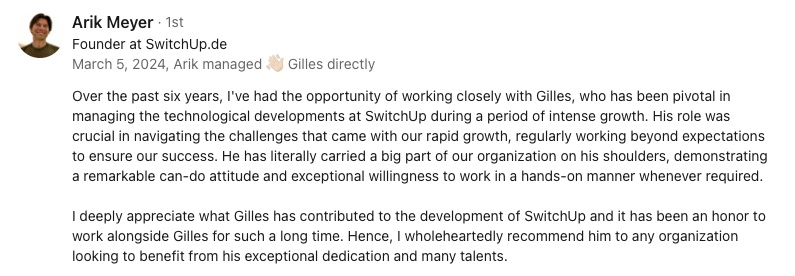Bridging Worlds: The Power of Connectivity
Abstract:
Connectivity in today's digital age has become essential for personal, professional, and societal interactions. The advancement of technology has facilitated seamless communication and bridged physical distances through various platforms like video calls and social media. Connectivity has significantly impacted productivity, efficiency, and transformed industries such as healthcare, education, and transportation. However, challenges like data security and digital inequality need to be addressed. Embracing inclusive and responsible connectivity, while leveraging emerging technologies like 5G and AI, is crucial for fostering a connected world that benefits individuals and communities.
essence of connectivity
We live in a world where staying connected is no longer a luxury but a necessity, much like a morning cup of coffee for some of us. Connectivity allows us to bridge gaps that once seemed insurmountable. From quick video calls with colleagues across the globe to keeping up with friends through social media, seamless communication has become the lifeblood of our daily routines.
Think about it. How often do you fire up a messaging app to communicate swiftly with your team, or use cloud services to collaborate on a project? Connectivity has transformed how we work, socialize, and even how we think. It has fundamentally altered the dynamics of personal and professional interactions.
On the professional front, the implications are nothing short of profound. Remote work has become more than a trend; it's a standard practice. This wouldn't be possible without the robust networks and platforms we rely on. They ensure that employees across the globe can collaborate as if they were sitting in the same room, albeit with fewer coffee spills. Video conferencing tools, collaborative software, and instant messaging apps have collectively driven productivity to new heights.
But it doesn't stop there. Connectivity fuels industries, drives innovations, and ultimately powers economic growth. Whether we’re talking about telemedicine bringing healthcare to remote areas or smart cities leveraging IoT for improved infrastructure, connectivity is the silent hero behind the scenes. Its influence stretches to education, enabling online learning and resources that make knowledge accessible to anyone with an internet connection.
Let's not forget the social impact. How often have you stayed connected with loved ones via social media platforms despite being miles apart? Or found solace in an online community that shares your interests and passions? Connectivity fosters relationships, nurtures communities, and even brings about social change.
So, let's raise a metaphorical toast to connectivity—a powerful force that shapes our world in more ways than we often realize, making the improbable not just possible, but routine.
impact on productivity, efficiency, and key industries
We all know that time is money, and in the corporate marathon, connectivity is the sprinter wearing rocket shoes. Whether you're hammering out a business proposal or managing a global supply chain, seamless connectivity has become the linchpin of modern productivity and efficiency. But let's not just skim the surface; let’s sift through how connectivity is genuinely transforming industries.
productivity enhancements
First off, let’s talk shop. In our offices, connectivity is the lifeline that keeps work humming smoothly. There’s no denying it; remote work isn't merely a contingency plan anymore. It's the new norm. From cloud-based project management tools that let us keep tabs on projects from start to finish, to video conferencing platforms making team huddles as easy as pie, the digital office mirrors a traditional workspace, sans commute. Projects no longer lag because of geographical barriers, teams can collaborate across time zones, and decision-making is lightning-fast.
Consider this: remember that time when sending a file from New York to Tokyo required an overnight courier? Now, it's just a click away. File sharing, synced calendars, and instant messaging streamline operations, allowing us to channel more energy into innovation rather than logistics. It's like having a digital assistant that just "gets" us.
healthcare: a paradigm shift
In the healthcare arena, connectivity isn't just a convenience—it's a revolution. Telemedicine has brought consultations, diagnoses, and even follow-ups to our living rooms. Imagine being able to consult with a specialist five states away without leaving your home. Platforms like electronic health records ensure a patient's history is accessible in seconds, reducing errors and improving care quality.
Moreover, let’s not sideline wearables and IoT devices. They're not just cool gadgets but lifesavers. Real-time data from smartwatches and medical sensors can alert healthcare providers to potential issues before they become emergencies. An elderly person’s fall or an irregular heartbeat can trigger immediate alerts, bringing timely interventions that could save lives.
education: bridging gaps
Let’s pivot to education, where connectivity is the unsung hero behind the scenes. The shift to online learning platforms has broken down the barriers of where and how we learn. Gone are the days when attending a world-class university required moving across the globe. Now, top-notch lectures and resources are just a mouse click away.
During the pandemic, connectivity ensured that students continued their education without significant disruptions. Teachers can now hold interactive sessions, quizzes, and even virtual field trips, making learning an engaging experience. Connectivity also levels the playing field, providing access to education for those in remote or underserved areas.
transportation: driving efficiency
In the transportation sector, connectivity powers smart cities and autonomous vehicles. Real-time data from sensors, GPS, and traffic cameras help to manage traffic flow, reduce congestion, and improve public transportation systems. Ride-sharing apps and smart logistics platforms make planning trips and deliveries as straightforward as ordering a pizza.
Picture the logistics of a large-scale supply chain without connectivity—it would be like navigating a ship without a compass. Today’s supply chains use IoT and advanced tracking systems to monitor goods in real-time, optimize routes, and even predict delays. It’s no wonder next-day shipping has become something we’ve come to expect rather than marvel at.
practical benefits and anecdotal evidence
On a personal note, I recall a meeting where we were grappling with a tight deadline for a product launch. Our team, spread across three continents, leveraged shared digital whiteboards, real-time messaging, and cloud-based design tools. What could have been a logistical nightmare turned into a seamless project, with everyone contributing as if we were all sitting in the same room.
Another anecdote involves a city’s public transportation system that integrated IoT and real-time data analytics. The result? Buses ran more efficiently, waiting times decreased, and commuter satisfaction soared. It was a classic win-win scenario, all thanks to the invisible threads of connectivity weaving everything together.
In essence, connectivity is not just reshaping industries; it’s redefining what we consider possible. From boosting productivity to revolutionizing healthcare, education, and transportation, it’s clear that the strings of the digital world are attached to almost every innovation today. So let’s appreciate how staying connected keeps us ahead, one byte at a time.
challenges: data security and digital inequality
Let's get real for a moment. While connectivity brings a bunch of perks, it also brings along a suitcase full of challenges, the heavyweights being data security and digital inequality. These issues aren't just speed bumps—they can be full-blown roadblocks if not addressed properly.
data security: keeping the vault locked
With great connectivity comes great responsibility, especially when it comes to data security. Cyber threats have become more sophisticated, almost as if they’ve been hitting the gym regularly. Whether it’s phishing schemes, ransomware attacks, or data breaches, these digital heists are all too common.
Security breaches can lead to:
- Loss of sensitive data
- Financial losses
- Reputational damage
- Operational disruptions
Picture it: your company’s confidential data leaking like a faulty faucet. It's a nightmare scenario affecting not just businesses but also individuals. Securing our digital assets is no longer optional—it’s mandatory. Firewalls, encryption, and multi-factor authentication are just the basics. Companies need to stay one step ahead by investing in advanced cybersecurity measures and continuous monitoring. After all, even the faintest whiff of a breach can send everyone into a frenzy.
digital inequality: bridging the digital divide
While some of us live in a world where everything is a click away, others aren’t so fortunate. There exists a surprising amount of digital inequality, where access to technology and the internet is unfortunately a luxury rather than a given. This gap affects not just individuals but whole communities, creating an uneven playing field.
Rural vs. Urban: Rural areas often struggle with inadequate infrastructure, making high-speed internet a distant dream. Cities, on the other hand, burst with fiber optic networks and 5G.
Economic Barriers: Even within urban settings, the cost of devices and internet plans can be prohibitive for low-income families. Schools and students in these areas often find themselves at a distinct disadvantage.
Educational Impact: The pandemic highlighted this divide starkly, as online learning became standard. For those without reliable internet, continuing education was a Herculean task.
The goal is to ensure equitable access to technology, much like building ramps for a more accessible world. Companies, governments, and nonprofits need to collaborate to develop infrastructure and subsidize costs to make the digital world inclusive.
Sure, I could talk all day about tech and connectivity, but it’s also vital to shine a light on the flip side. By addressing data security head-on and working towards bridging the digital divide, we can make sure that everyone enjoys the benefits of a connected world without the baggage.
embracing inclusive and responsible connectivity
Connectivity shouldn't be an exclusive club; it should be a welcoming party where everyone’s invited. But making this happen takes a bit more than just wishful thinking. Let’s talk about how we can make connectivity more inclusive and responsible while keeping an eye on the future.
emerging technologies: the game changers
First up, emerging technologies like 5G and AI. They’re not merely buzzwords; they’re the heavy lifters that are redefining what connectivity can bring to the table. 5G promises lightning-fast speeds and lower latency, making everything from remote surgeries to real-time collaboration not just feasible but normal. On the AI front, the ability to analyze and act on vast amounts of data in real-time is game-changing. Imagine traffic management systems that adjust in real-time to minimize congestion or AI-driven diagnostics that provide instant medical insights. It’s like giving our digital world a major upgrade.
making it universally accessible
But here’s the kicker—we need to ensure these benefits are accessible to everyone. That means expanding infrastructure, particularly in underserved areas. Think of it as laying the groundwork for a digital superhighway. Governments and private sectors have a monumental role to play here. Grants, subsidies, and public-private partnerships can drive expansion efforts where they're needed most. It’s about making sure that whether you're in a bustling city or a quaint rural village, you have a virtual seat at the table.
equity in access: school, home, and beyond
Connectivity in the modern age should be as basic as electricity and clean water. Kids shouldn't be huddling outside fast-food restaurants for Wi-Fi to attend virtual classes. Schools need to be equipped with not just devices, but robust internet connections. The same goes for homes. ISP programs offering affordable rates for low-income families are a good start, but it needs to be a coordinated effort across the board. Every student should have the same access to learning opportunities, regardless of their ZIP code or family income.
responsibility: securing and stewarding our digital ecosystem
As we push for inclusivity, let’s not lose sight of responsibility. Governance and regulation need to keep pace with our technological advancements. We can’t have a digital Wild West when it comes to data security and privacy. Putting robust data protection laws in place is a start. But it’s also about fostering a culture of digital responsibility. Educating folks on best practices for security and data use is just as crucial. After all, even the strongest safeguards won’t help if end-users aren't clued in.
So, here’s the deal—while the wonders of connectivity continue to unfold, ensuring these marvels are shared widely and wisely is the real win. By leveraging the promise of emerging technologies and committing to equitable and responsible practices, we're not just bridging gaps; we’re building a world where connectivity serves as a cornerstone for progress and inclusion, benefiting every single one of us.














